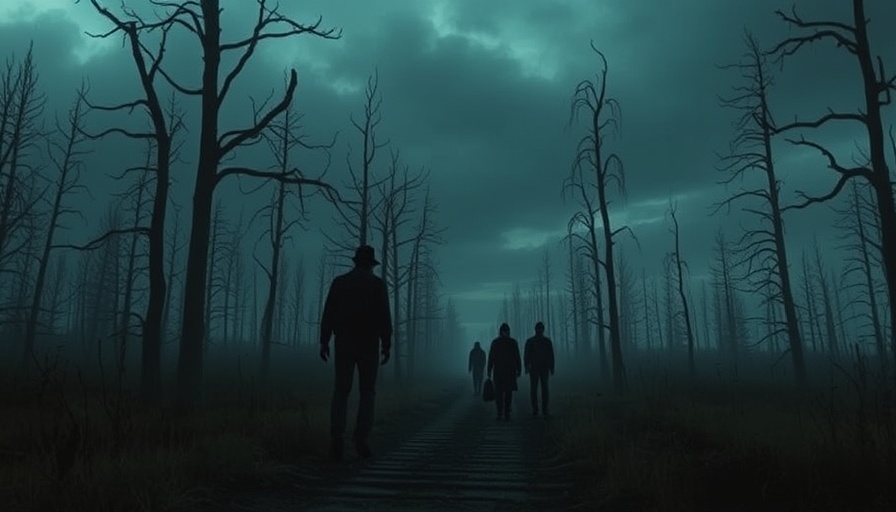
The Grim Grit of Dystopian Cinema: A Look at The Long Walk
In an era where escapism often reigns supreme, the release of The Long Walk reminds viewers that dystopia can sometimes be a mirror reflecting the dark undercurrents of societal realities. This adaptation of Stephen King's gripping narrative plunges audiences into a harrowing endurance contest—one where survival hinges not just on physical stamina but also on the complexities of human connections.
A Modern Take on a Classic Premise
In a world of flashier death-game narratives like Squid Game and The Hunger Games, The Long Walk stands apart. Rather than emphasizing visual extravagance, director Francis Lawrence opts for an almost hauntingly beautiful landscape—setting a stage that contrasts the brutality of its premise with the serene imagery of rural America. This juxtaposition adds a layer of complexity that elevates the film beyond simple entertainment.
The Intimate Bonds Amidst Chaos
At its core, the film focuses on the friendships formed amongst the competitors, particularly the bond between Ray Garraty, played by Cooper Hoffman, and his fellow contestant, Pete. This nurturing connection amid an environment of hostility serves to humanize each character, drawing viewers in with relatable themes of camaraderie and support. It's reminiscent of King's earlier work, Stand By Me, but set against a far bleaker backdrop.
Social Commentary and Historical Resonance
Originally written in 1967, King's The Long Walk reverberates with echoes of social commentary that remain relevant today. Its stark portrayal of young men's struggles in a hyper-authoritarian society reflects ongoing conversations about masculinity, rage, and resilience. As we witness the decline of each competitor, the film grapples with the underlying pressures faced by youth in an increasingly hostile world.
A Cinematic Experience: The Craft of Storytelling
One of the standout elements of the film is how it weaves rigorous storytelling with fine cinematography. The artistic decision to maintain a grim realism, illustrated through visceral depictions of the death that occurs when contestants falter, resonates deeply. These haunting visuals serve as a stark reminder of the physical and mental tolls exacted by society's expectations and the lengths one will go for fleeting rewards.
Future Trajectories of Dystopian Themes
As cinema evolves, The Long Walk provides a poignant reflection on dystopian narratives. While audiences may crave visual spectacles, there's a growing appetite for stories prompted by emotional depth and incisive social critique. The potential for reshaping narratives about competition and survival into more substantive explorations of human nature and society's struggles is vast.
Final Thoughts: The Value of Dystopian Narratives in Today's Culture
For digital nomads and culture enthusiasts alike, The Long Walk offers an opportunity to reflect on personal values and societal issues that affect communities worldwide. Engaging with this content empowers viewers to question the structures that govern our lives, fostering a better understanding of modern dilemmas.
As we witness increasingly complex cultural landscapes and challenges, diving into dystopian stories like King's can be both illuminating and transformative. This film doesn't just entertain; it prods us to reconsider the world around us and the deeper meanings behind our shared human experiences.
 Add Row
Add Row  Add
Add 




Write A Comment